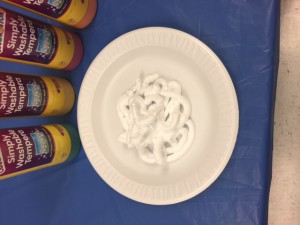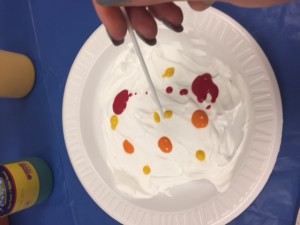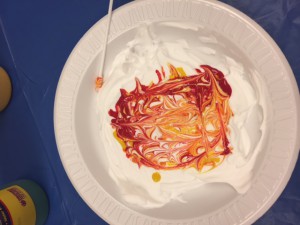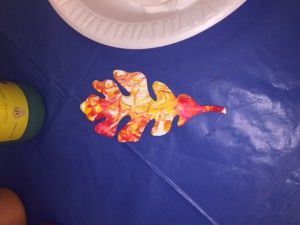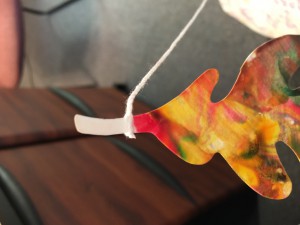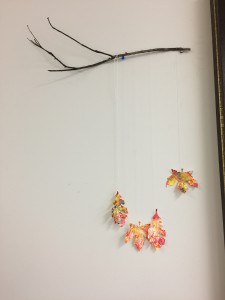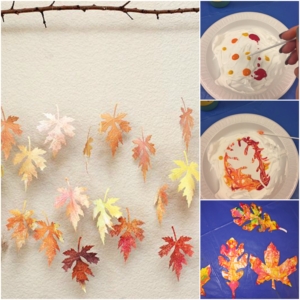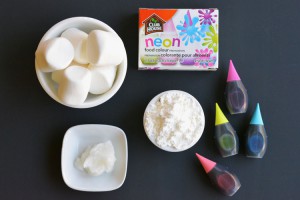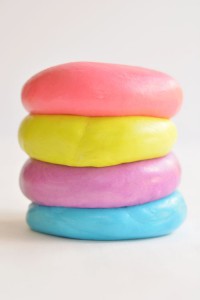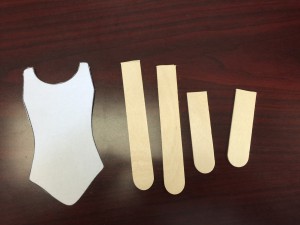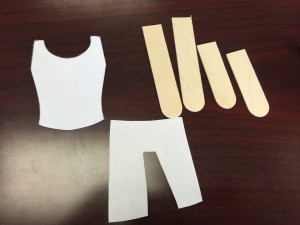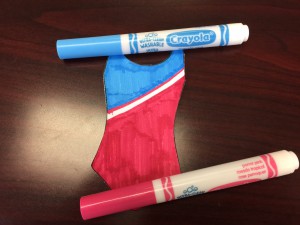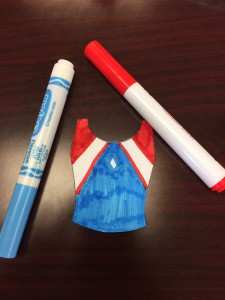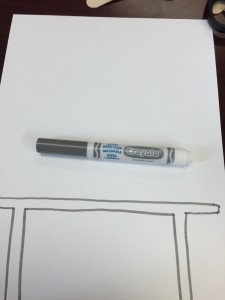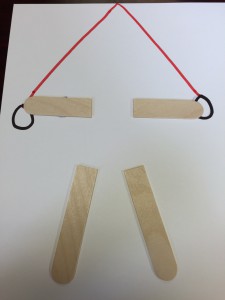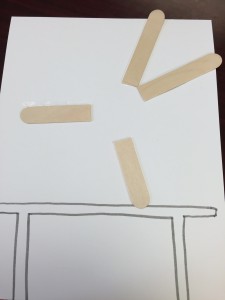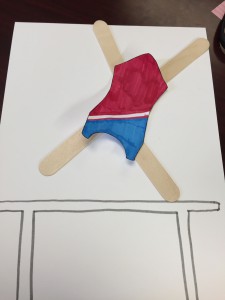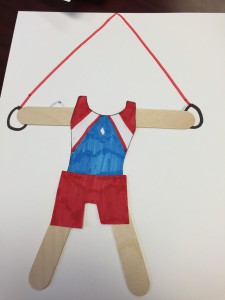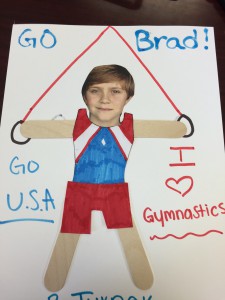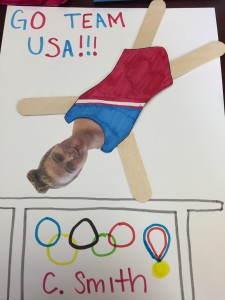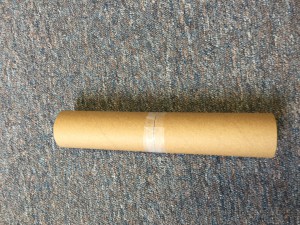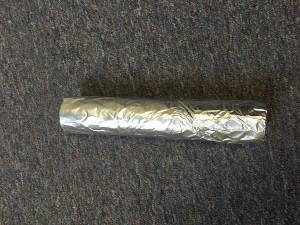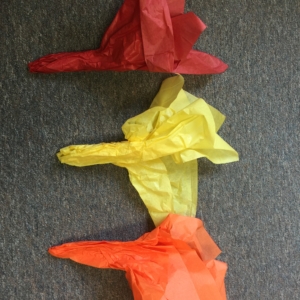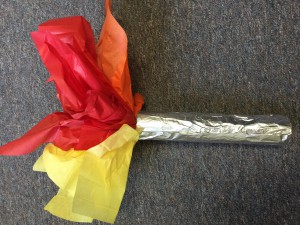Fall Foliage Mobile
This fall foliage mobile is a beautiful seasonal art project to do with the kids in your care! They’ll love the process art that comes along with mixing paint and shaving cream, and seeing that every leaf comes out different! This is also a great opportunity to get the kids moving by taking them on a scavenger hunt outside to find the sticks needed for the project!
Materials:
- Shaving Cream
- Tempera Paint (fall colors)
- Assorted leaf die-cuts
- String
- Stick or Small Branch
- Paper Plate
- Spoon
- Stirrer
Directions:
- Cut shapes of leaves using die-cuts on cardstock paper or cardboard.
- Spray medium amount of shaving cream onto paper plate and smooth out with spoon.
- Put a few droplets of each color onto the shaving cream.
- Swirl the droplets around with a stirrer or toothpick.
- Place one leaf face down onto the paint and cream. Make sure to press down all edges.
- Slowly remove the paper from the cream, use your nails or the stirrer to help pick it up.
- Scrape off the excess shaving cream with the edge of another piece of paper.
- Repeat steps by spraying more shaving cream on top of the paint and adding more paint. You should be able to get 2 or 3 leaves out of each layer.
- Let leaves dry for 1 hour.
- Once dry, cut strings for each leaf to different lengths
- Tie string around the stem of your leaves
- Attach each string to a branch or stick.
- Hang your branch or stick for decoration!

